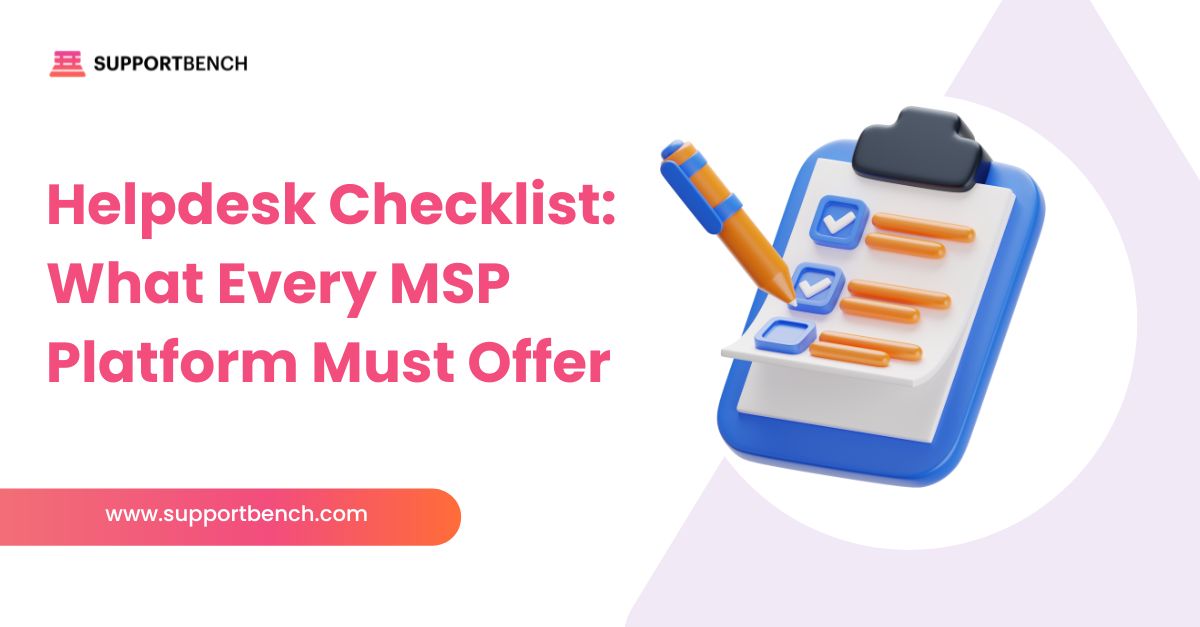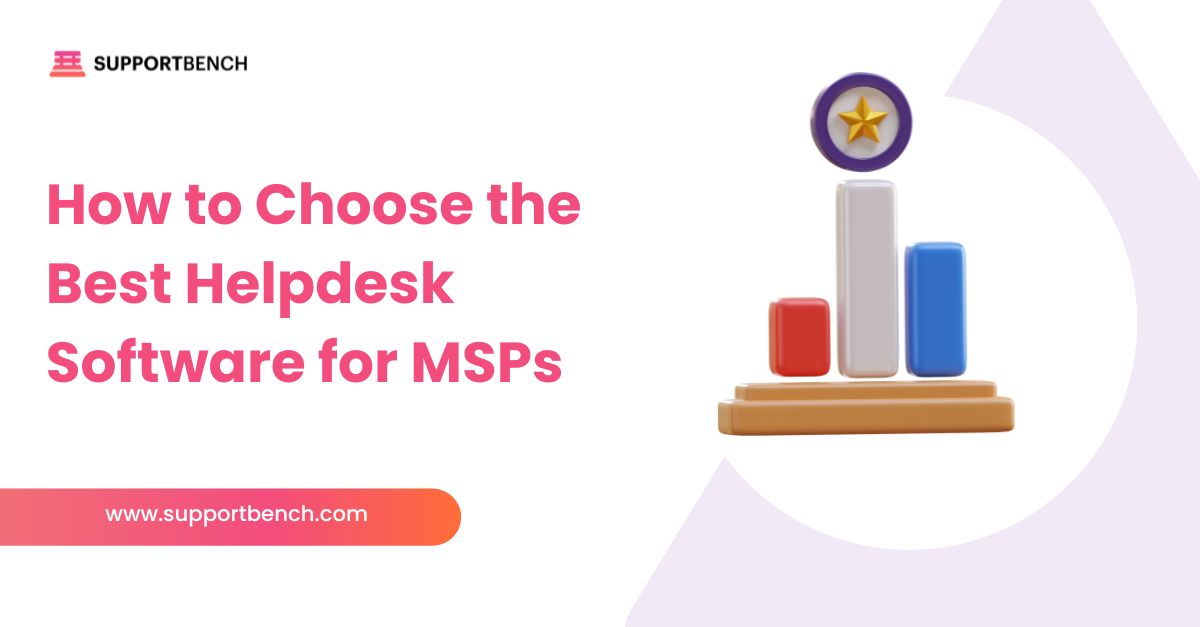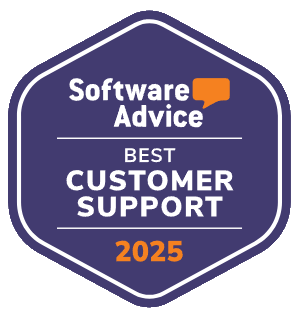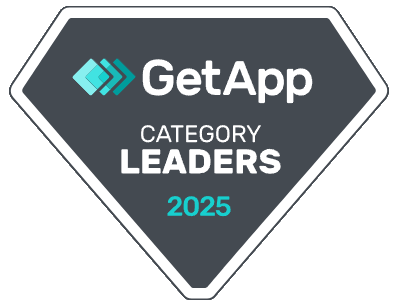Managing multiple clients as an MSP is like piloting a fleet of aircraft. Each client has its own route, schedule, and set of expectations—and your helpdesk is the control tower keeping it all on track.
As your client base grows, so does the complexity. There are more incoming requests, tighter SLAs, and more variables to manage. Basic ticketing tools can’t scale with that demand.
To stay ahead, MSPs need platforms that segment clients, automate escalations, and give teams full visibility in real time. The right helpdesk features don’t just support growth—they make it sustainable.
Supportbench includes all of the must-have features MSPs need to deliver faster service, track performance, and maintain control as they scale.

Here is the Quick Answer:
MSPs need helpdesk software that supports multi-tenant client management, SLA automation, omnichannel ticketing, and real-time reporting. Supportbench combines all of these features in a single, scalable platform—purpose-built to streamline service delivery and support MSP growth.
1. Multi-Client Management & Scalability
The ability to manage multiple clients within one helpdesk platform is non-negotiable for MSPs.
You’re not just supporting one organization—you’re coordinating dozens, each with its own SLAs, priorities, branding, and permissions. Your helpdesk must keep those environments clearly separated without creating chaos for your team.
Supportbench uses a true multi-tenant architecture, allowing agents to support multiple clients from a single interface—without risking data overlap or service inconsistency.
Each client can have its own:
- SLA rules and escalation paths
- Branded portal and email templates
- Queue configurations and access permissions
- Reporting views and dashboard filters
This makes it easy to grow from a few clients to a few hundred without switching platforms—or adding overhead.

2. Core Ticketing Workflows
Ticketing is the foundation of any helpdesk—but for MSPs, it has to be smarter, more structured, and more adaptable.
Support teams need full visibility into what’s happening, who’s responsible, and how tickets are progressing—across multiple clients.
Supportbench supports robust ticket workflows that help agents stay focused and aligned:
- Priority settings based on urgency or client-specific SLA tiers
- Status indicators that show where tickets stand at a glance
- Internal collaboration tools like private comments and shared notes
- Tagging and categorization to filter, route, and report more efficiently
Real-time dashboards and queue visibility ensure nothing gets lost, and teams stay ahead of deadlines—without micromanagement.

3. Automation, SLA Management & Escalation
Manual tracking doesn’t scale—especially when you’re managing multiple SLAs across dozens of clients. That’s why workflow automation is one of the most valuable helpdesk features for MSPs.
Supportbench lets you configure automation rules that reduce workload and improve SLA compliance across the board.
Key capabilities include:
- SLA timers that track response and resolution times per contract
- Breach warnings to alert agents and supervisors before deadlines are missed
- Automated ticket routing based on issue type, priority, or team
- Escalation paths that trigger when severity increases or thresholds are breached
Everything is configurable per client, so you can tailor workflows to meet specific contractual obligations—without relying on agents to track it manually.
Supervisors can monitor all of this in real time, using SLA dashboards to spot risk early and intervene before service quality slips.

4. Omnichannel Communication
Your clients reach out in different ways—email, chat, portal messages. Your helpdesk should bring it all together, not scatter it further.
Supportbench consolidates every conversation into a single ticket thread, no matter the channel. That means:
- Emails, chats, and portal messages stay connected to the same case
- Agents see the full history in one view
- Clients get faster, more accurate responses
This unified approach eliminates confusion, reduces back-and-forth, and ensures issues don’t fall through the cracks—especially when multiple agents or channels are involved.

5. Self-Service & Knowledge Portals
Not every issue needs a support ticket. When clients can find answers on their own, everyone saves time.
Supportbench offers a customizable self-service portal where clients can:
- Search articles and FAQs
- Submit and track tickets
- Access resources tailored to their brand and service plan
Agents can create and update knowledge base content directly from tickets, speeding up documentation and reducing repeated inquiries.
Article performance metrics also help you identify gaps—so your most common issues are covered before clients even have to ask.
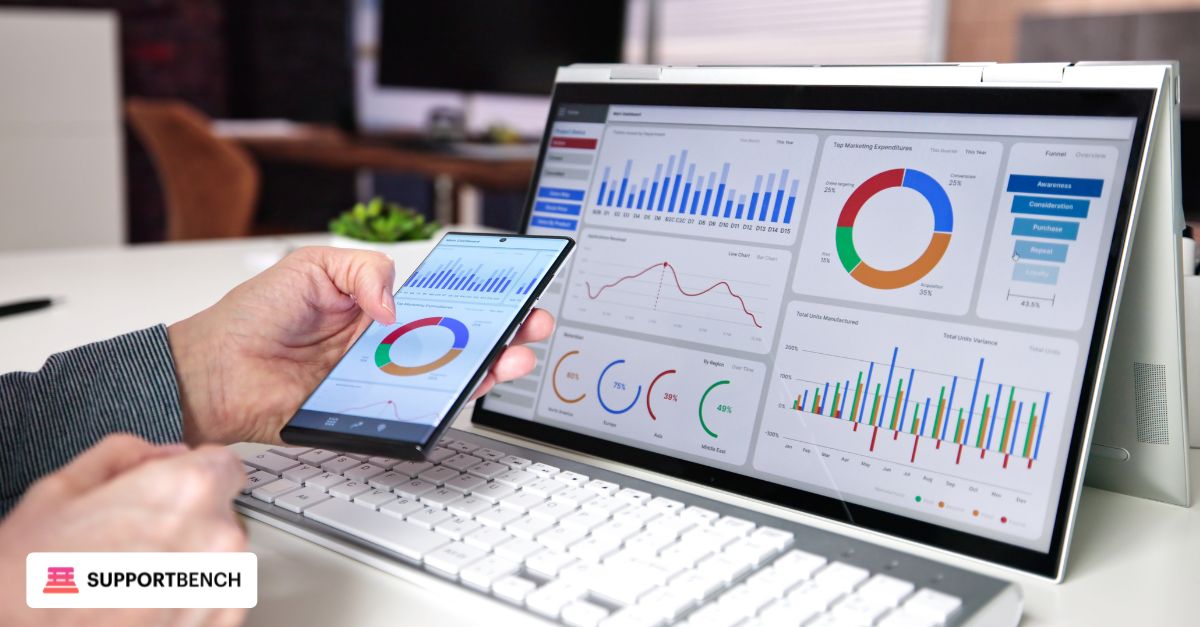
6. Dashboards & Analytics
You can’t improve what you can’t see. MSPs need live visibility into how their support teams are performing—across clients, agents, and service lines.
Supportbench gives you real-time and historical insights that go beyond surface-level metrics:
- SLA tracking that shows approaching breaches before they happen
- Ticket volume trends by client, issue type, or channel
- Agent scorecards filtered by team, role, or timeframe
- Exportable reports for internal use or client-facing updates
You can even connect resolution times to ticket load or SLA compliance—so resource planning becomes proactive, not reactive.
It’s the difference between guessing and leading with data.

7. Security & Compliance
As an MSP, you’re trusted with sensitive data across multiple client environments. One misstep can damage relationships—or trigger legal consequences.
Supportbench is built with security and compliance at its core:
- Role-based access controls (RBAC) to separate permissions by team, client, or function
- Logical data separation to ensure clients never see each other’s information
- TLS in transit and AES-256 encryption at rest to safeguard communication and storage
- Audit trails that track every ticket change, comment, and file upload
For clients in regulated industries—like finance, healthcare, or government—Supportbench supports compliance with SOC 2, GDPR, HIPAA, and other standards.
This isn’t just about checking boxes. It’s about proving your MSP can be trusted to protect client data at scale.
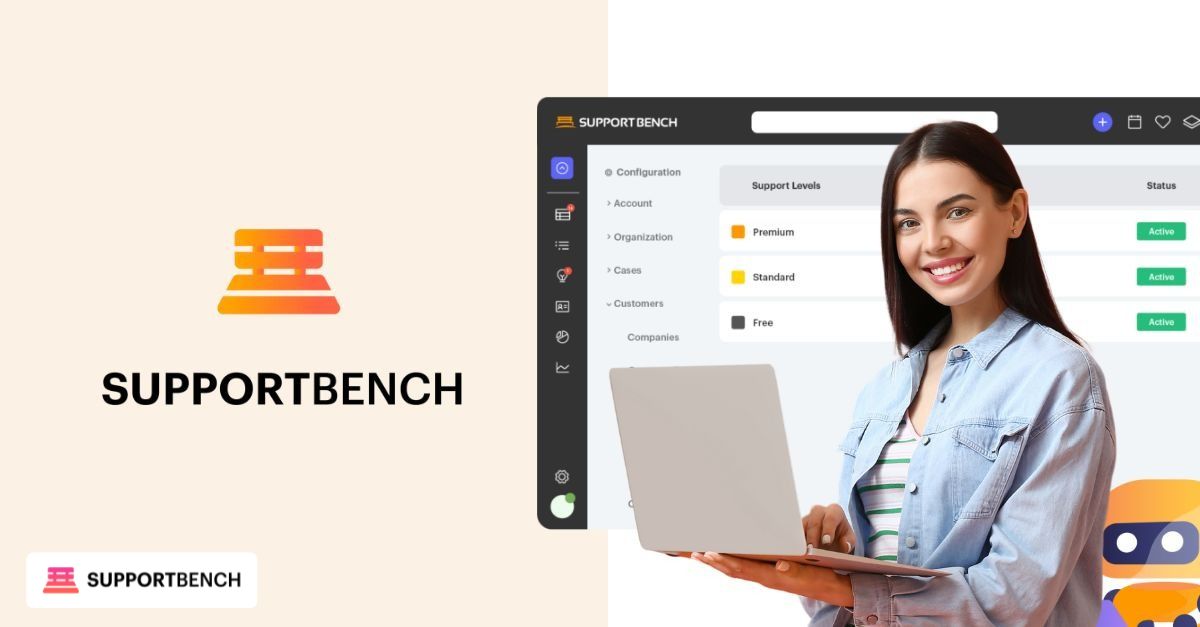
8. Onboarding & Migration Support
Switching helpdesks is a big move—and for many MSPs, the migration hurdle is what keeps them stuck with the wrong platform.
Supportbench makes the transition easier with hands-on onboarding and structured import tools.
You get:
- Guided data migration for tickets, users, SLAs, and knowledge base content
- Dedicated onboarding managers to handle setup and configuration
- Live admin training and walkthroughs for faster team ramp-up
- Self-serve documentation for ongoing enablement
Instead of handing you a login and walking away, Supportbench partners with you through setup. That means faster go-live, less disruption, and stronger early adoption.

9. Real-Time Communication & Mobile Access
Support teams aren’t always at their desks. Whether working remotely or in the field, your agents need access that moves with them.
Supportbench supports on-the-go productivity with:
- Mobile-friendly interfaces for ticket updates, status checks, and replies
- Integrated live chat for internal or client-facing conversations
- Shared notes and collaboration tools to keep agents aligned in real time
Push notifications and mobile alerts help teams stay responsive, even during off-hours or while switching locations.
In fast-paced MSP environments, this flexibility keeps things moving without sacrificing accountability.

10. Custom Branding & Client Interfaces
Every client wants to feel like your only client—and that starts with how your helpdesk looks and feels.
Supportbench gives MSPs full control over the client experience, with:
- Custom-branded portals that reflect each client’s logo, colours, and tone
- White-labeled email templates to match client branding
- Separate environments managed through a single admin console
This level of personalization reinforces trust, presents your MSP as a premium provider, and supports clean separation between clients—even as your roster grows.
You get central control. Clients get a tailored experience.

11. PSA/RMM Integrations
MSPs rely on multiple systems to deliver service—so your helpdesk needs to work with the tools you already trust.
Supportbench integrates with:
- PSA platforms like Salesforce and other CRM tools
- RMM solutions for monitoring, asset alerts, and direct ticket creation
- Custom tools via open API for specialized workflows or legacy systems
These integrations sync tickets, asset data, time tracking, and communications—eliminating swivel-chair work and improving accuracy across platforms.
The result: a more connected support ecosystem, fewer silos, and faster response times with better context.
Why Supportbench is a Strong Fit for MSPs
MSPs need more than just a ticketing system—they need a platform that understands the complexity of serving multiple clients under pressure.
Supportbench combines everything into a single, unified system:
- Multi-tenant support with secure client separation
- Custom SLAs, workflows, and branded portals per client
- Real-time analytics and predictive sentiment tracking
- Built-in AI to speed up responses and surface key insights
- Seamless integrations with PSA, RMM, and CRM tools
- Hands-on onboarding and flexible API options
It’s not a one-size-fits-all solution retrofitted for MSPs. It’s purpose-built to help them scale, retain clients, and maintain service quality—without adding friction or complexity.

Choosing the Right Platform: A Practical Process
Evaluating helpdesk tools can feel overwhelming—but with the right process, you can focus on what matters most to your operations.
Here’s a step-by-step approach MSPs can follow:
- Define your needs: List how many clients you support, which SLAs are in place, and what channels and integrations are required.
- Map your workflows: Outline how tickets move from intake to resolution, including escalation rules and agent handoffs.
- Prioritize key features: Look for multi-tenant support, SLA automation, client portals, reporting, and integrations.
- Request live demos or trials: Test real-world scenarios—escalations, SLA warnings, mobile ticketing, and knowledge base usage.
- Evaluate onboarding support: Choose vendors that guide migration, train your team, and stay involved post-implementation.
- Compare data: During trials, track metrics like resolution time, SLA compliance, and agent adoption to measure fit.
- Think long-term: Prioritize platforms that will scale with you, not limit you as your MSP grows.
In Summary: The Features That Matter Most to MSPs
For modern MSPs, the helpdesk isn’t just a support tool—it’s the backbone of client experience, service delivery, and operational efficiency.
The right platform should let you manage high volumes without losing visibility, enforce SLAs without manual tracking, and scale support without breaking your workflows.
Supportbench brings all of this together in one flexible system—purpose-built for the demands of managed service providers.
If you’re ready to streamline support, deliver consistent service across clients, and grow without chaos, it’s time to see what Supportbench can do.
Book a personalized demo and explore how Supportbench simplifies helpdesk management for MSPs.




